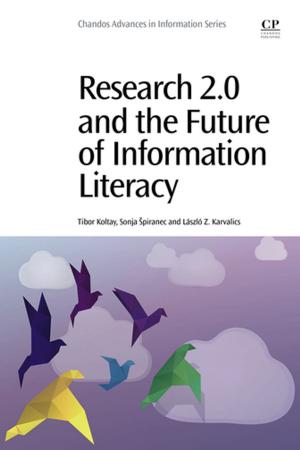Abstracts and Abstracting
A Genre and Set of Skills for the Twenty-First Century
Nonfiction, Reference & Language, Language Arts, Linguistics, Reference| Author: | Tibor Koltay | ISBN: | 9781780630328 |
| Publisher: | Elsevier Science | Publication: | March 15, 2010 |
| Imprint: | Chandos Publishing | Language: | English |
| Author: | Tibor Koltay |
| ISBN: | 9781780630328 |
| Publisher: | Elsevier Science |
| Publication: | March 15, 2010 |
| Imprint: | Chandos Publishing |
| Language: | English |
Despite their changing role, abstracts remain useful in the digital world. Highly beneficial to information professionals and researchers who work and publish in different fields, this book summarizes the most important and up-to-date theory of abstracting, as well as giving advice and examples for the practice of writing different kinds of abstracts. The book discusses the length, the functions and basic structure of abstracts, outlining a new approach to informative and indicative abstracts. The abstractors’ personality, their linguistic and non-linguistic knowledge and skills are also discussed with special attention.
- Despite the relatively large number of textbooks on the topic there is no up-to-date book on abstracting in the English language
- In addition to providing a comprehensive coverage of the topic, the proposed book contains novel views - especially on informative and indicative abstracts
- The discussion is based on an interdisciplinary approach, blending the methods of library and information science and linguistics
Despite their changing role, abstracts remain useful in the digital world. Highly beneficial to information professionals and researchers who work and publish in different fields, this book summarizes the most important and up-to-date theory of abstracting, as well as giving advice and examples for the practice of writing different kinds of abstracts. The book discusses the length, the functions and basic structure of abstracts, outlining a new approach to informative and indicative abstracts. The abstractors’ personality, their linguistic and non-linguistic knowledge and skills are also discussed with special attention.
- Despite the relatively large number of textbooks on the topic there is no up-to-date book on abstracting in the English language
- In addition to providing a comprehensive coverage of the topic, the proposed book contains novel views - especially on informative and indicative abstracts
- The discussion is based on an interdisciplinary approach, blending the methods of library and information science and linguistics















